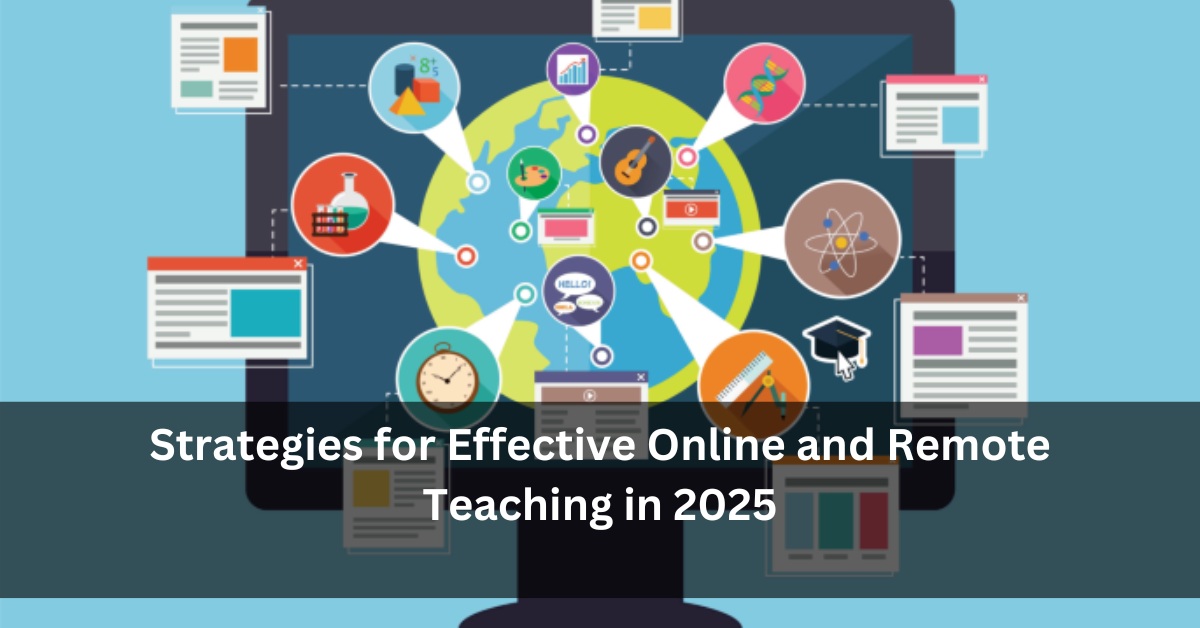Strategies for Effective Online and Remote Teaching in 2025
The way we learn has changed forever. Ever since COVID-19 forced schools and colleges to shut down, online and remote teaching became a new normal. But even in 2025, many teachers and students across India still rely on online classes — whether it’s full-time or hybrid.
The challenge today is not just conducting online classes, but doing it in a way that is effective, interactive, and beneficial for students. In this blog, we cover simple yet powerful strategies every teacher can use to improve their remote teaching style — with a focus on what really works for the Indian education system.
Key Benefits of Online Teaching
Before diving into strategies, let’s understand why online teaching is still a smart choice in India:
- Reach: Students from remote areas can access good education from anywhere.
- Flexibility: Both teachers and students can choose timings that work best for them.
- Variety: Lessons can include videos, games, and digital whiteboards to keep things fun.
- Recordings: Sessions can be recorded, so students can revise at any time.
Now, let’s look at how teachers can make the most out of this powerful platform.
1. Plan Your Class Like a Story
Whether it’s a history lesson or a science experiment, every class should have a beginning, middle, and end.
- Start with a warm-up: Ask a question, do a poll, or share a fun fact.
- Middle: Teach your topic using short explanations, videos, and pictures.
- End: Summarize and take questions from students. Use a quiz to test what they learned.
Tip: Break up the class into 10-15 minute segments to keep attention high.
2. Keep It Interactive
One big issue with online teaching is student attention. To avoid “Zoom fatigue”:
- Ask students to speak or present.
- Use yes/no or multiple-choice polls.
- Give them short, quick assignments.
- Encourage students to keep their cameras on during discussions.
When students are part of the conversation, they’re more likely to understand and remember the lesson.
3. Use Indian-Friendly Tech Tools
You don’t need fancy tools to teach well online. Here are a few that work great in India:
- Google Meet or Zoom: Easy video classes, even on mobile data.
- Google Classroom: To share notes, collect homework, and track attendance.
- Diksha App: Free content by NCERT and State Boards, available in many Indian languages.
- Kahoot! / Quizizz: For fun quizzes and tests.
- WhatsApp: For homework reminders and sharing links.
Most of these tools are free and work well even with low internet speed.
4. Make Learning Personal
Not every student learns the same way. Some may learn better with visuals, while others need more practice. So:
- Give options: Notes, audio files, videos.
- Allow slow learners more time to answer.
- Offer weekly one-on-one sessions if possible.
Keep your teaching style flexible to meet student needs.
5. Be Regular With Feedback
Students need to know if they are doing well. Without proper feedback, many feel lost.
- Share weekly progress reports.
- Give short comments on assignments.
- Encourage peer reviews — let students check each other’s work.
Make feedback clear and kind. Praise small wins.
6. Stay Connected With Parents
In India, parents play a big role in their children’s education. Teachers should:
- Share monthly progress with parents.
- Organize virtual PTMs (Parent-Teacher Meetings).
- Give parents tips on how they can support their child at home.
A supportive home environment can double the success of online learning.
7. Keep Learning as a Teacher
Just like students, teachers should never stop learning. Here’s how you can improve:
- Join free teacher training on platforms like SWAYAM, NISHTHA, or CBSE Training Portal.
- Attend webinars about online teaching.
- Follow educational pages on YouTube and LinkedIn.
Remember, better teaching starts with better learning.
8. Address the Common Problems
Yes, online teaching in India still has challenges:
| Problem | Solution |
| Poor internet | Share recorded lessons via WhatsApp or pen drives |
| Low student interest | Include games, stories, and personal examples |
| No quiet study space at home | Give flexible deadlines and offline tasks |
The key is patience and planning.
Final Thoughts from Bloggers Hub
Online teaching is not a shortcut — it’s a smart way to make education more inclusive and future-ready. With the right mindset and tools, teachers in India can turn any home into a classroom and every child into a curious learner.
At Bloggers Hub, we bring you the latest educational tips in the simplest language — made especially for Indian teachers, parents, and students.
So whether you’re a school teacher, tuition coach, or college lecturer, these strategies can help you improve your teaching style and create a better learning experience.
✅ Bookmark Bloggers Hub for more practical education stories
✅ Share this article with your teacher groups
✅ Join our newsletter to stay updated!







